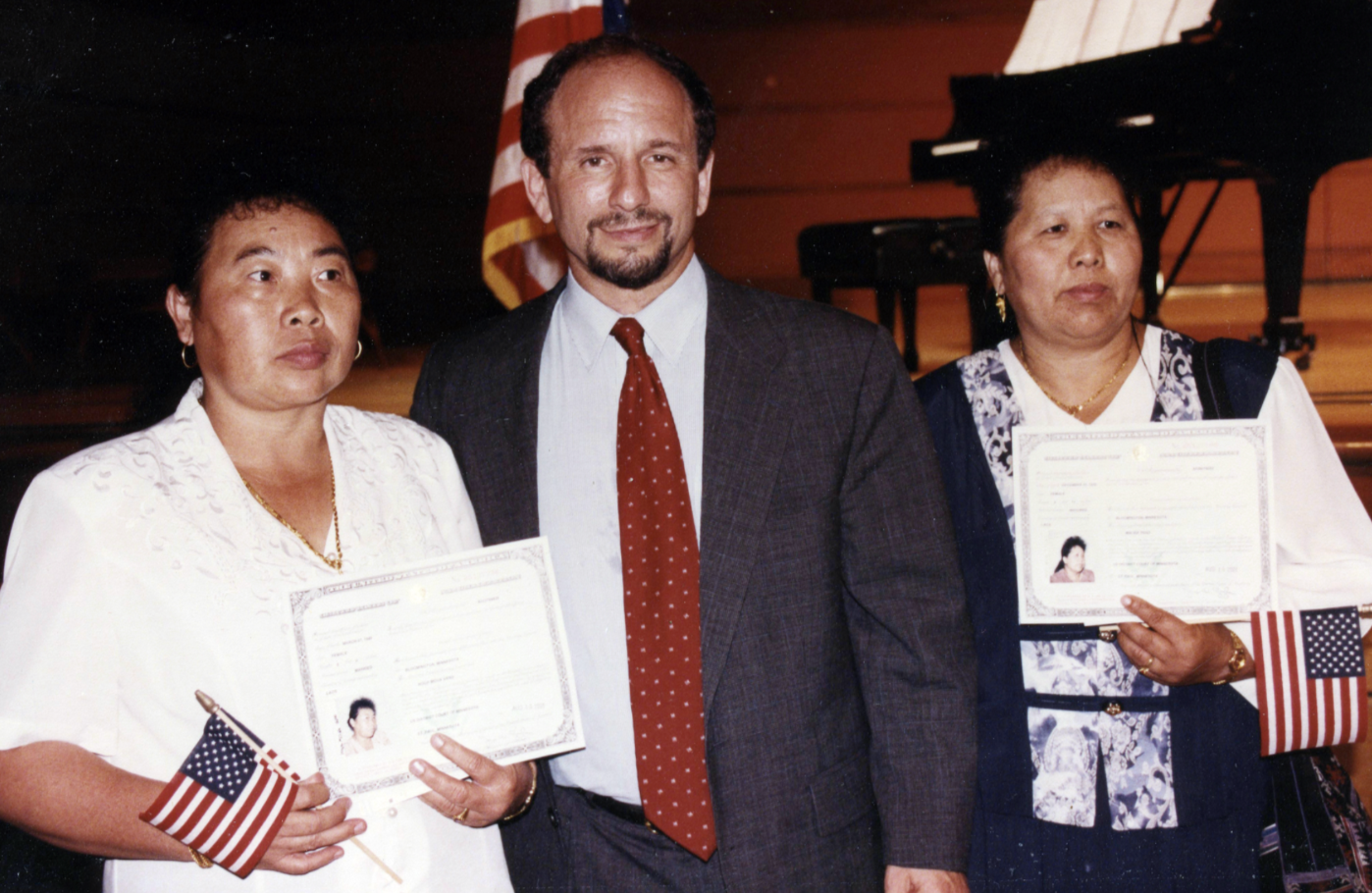Our History
“Without our SGU soldiers’ bloodshed for America during the Vietnam War, America would have never opened the door and brought our Hmong people to this great nation. It is our moral responsibility to honor and remember our soldiers for their ultimate sacrifices for giving us this incredible opportunity.”
— General Vang Pao
Minnesota
2006
When John F. Kennedy took over as President, he dispatched CIA agents into Laos to start recruiting Hmong men as a part of the U.S. secret army. Here, JFK spoke on the subject of Laos at State Department Auditorium in Washington, D.C., March 23, 1961. (Courtesy JFK Library)
After WWII, China closed its doors to foreigners and built an alliance with Communist Russia. The two super-power countries attempted to conquer Asia and Southeast Asia. Meanwhile the Westerners were preparing to return home in peace and give independence to the French Indochina countries after the North Vietnamese Vietminh defeated the French at Dien Bien Phu in 1954. Subsequently, Laos was newly established as an independent and neutral state by the 1954 Geneva Accords. (Courtesy Col. Nhia Xou Yang)
Vice President Hubert Humphrey visited Laos during his Vietnam War tour
U.S. Vice President Hubert Humphrey, of Minnesota, received a flower bouquet in Vientiane, Laos during his tour of Southeast Asia in 1966. In Laos, he visited several economic development projects as well as being briefed on the U.S. military involvement in the country. (SGU Collection)
“May 14 of each year is designated as Hmong Special Guerrilla Units Remembrance Day in honor of Southeast Asians, Americans, and their allies who served, suffered, sacrificed, or died in the Secret War in Laos during the Vietnam War in the years 1961 to 1975 in support of the armed forces of the United States, and in recognition of the significance of May 14, 1975, the last day that the overall American-trained Hmong command structure over the Special Guerrilla Units in Laos was operational.” (Photo courtesy Andrew L. Xiong)
The Secret War/Vietnam War era affected every aspect of the Hmong life — men, women, children, and the elderly — from their military involvement as U.S.-allies in the Secret War; as war-torn refugees temporary living in the concentration centers in Thailand; as American remnants who were being chased after by enemy troops, forcing them to hid in the jungle of Laos for decades; and their diaspora to America were met with unprecedented challenges. (Courtesy Blia Kao Vang Collection) Coming soon
| WAR’S IMPACT ON THE HMONG
| BECOMING AMERICANS
Almost all of the Hmong who first arrived in the U.S. as war-torn refugees from Laos spoke no English. And the struggles in America seemed unending, just like their past war experiences. However, America provided job opportunities for the adults and educations for their children. Coming soon
Today, Minnesota is home to about 95,000 Hmong, making them the second largest Hmong population in the U.S. The Twin Cities has the most urban Hmong concentration than any other U.S. metropolitans. This link “Hmong and Hmong Americans in Minnesota” was published in 2016. Latest article will be coming soon.
This Hmong Now & Then gallery is a comparison of their lifestyles, adaptation, military service, and community involvement from now in Minnesota/USA (post-1975) to then in Laos (pre-1975). This gallery provides a photographic perspective of how far the Hmong have become in this short amount of time in their own history. Coming soon
| HMONG NOW & THEN








